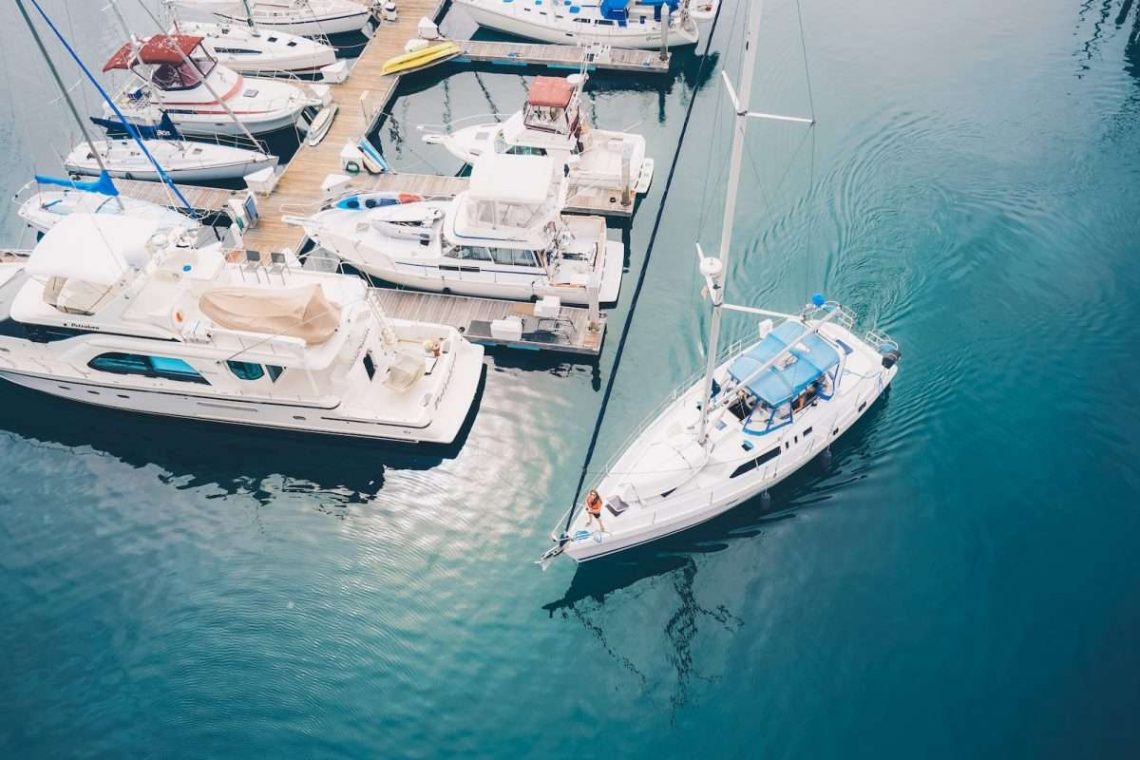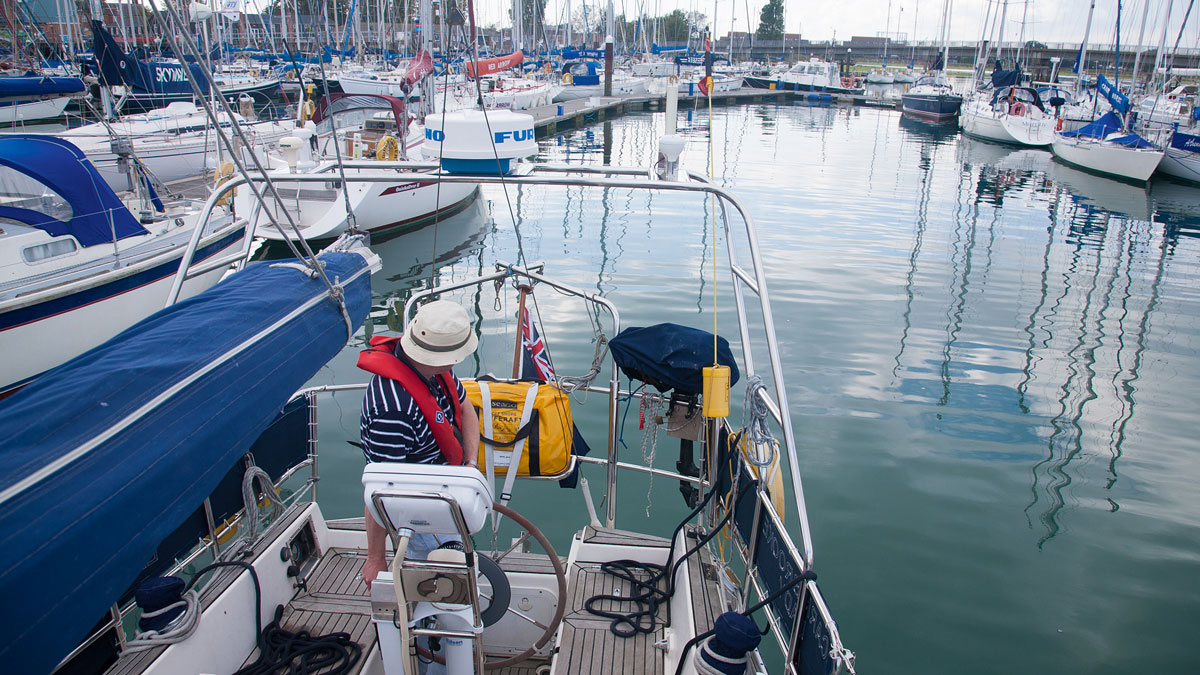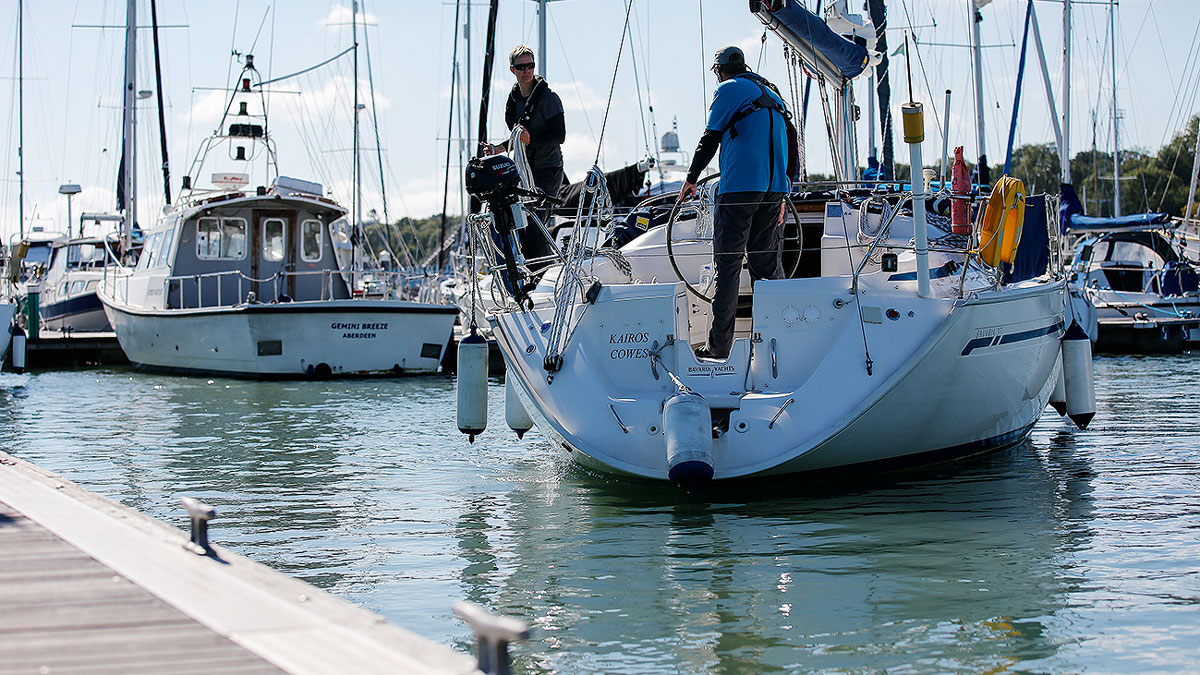
Easy cruising: How to enter an unknown harbor
Entering an unknown harbor. Exploring places you have never been to before is one of the greatest attractions of a sailing cruise. However, entering unfamiliar ports and marinas can be challenging and stressful, with many opportunities for mistakes. It will never be possible to make arriving at a new port completely predictable and easy. But thorough preparation can minimize errors and make the arrival the exciting and rewarding experience it should be.
Regardless of whether the harbor is tricky or straightforward, there are certain factors that must be considered during preparation, including the characteristics of the boat, the crew’s level of experience, and the skipper’s knowledge.

Sharing the plan with the crew
The first element to consider when entering an unknown harbor is the knowledge and experience of both yourself and the crew. Preparing to enter an unfamiliar port requires more preparation than entering a well-known one. A useful tip is to proceed as if you were sailing alone—not because you cannot rely on your crew, but because you need to allow for wider safety margins and better foresight than usual.
Assuming you sail most of the time with a crew, it is essential that planning is a shared process so that everyone feels involved. However, it must also culminate in a solid briefing. Keeping everything to yourself and then shouting instructions at the last minute will be ineffective. A good briefing will help avoid costly mistakes. It will also motivate and engage the crew, helping them understand what is about to happen and enabling them to assist or cover for your mistakes when they occur.

Preparing the boat is essential
Secondly, the boat you are sailing can make entering a harbor easier or more challenging, depending on how well equipped and fitted out it is. Often, when sailing on a chartered boat, you are not very familiar with the hull and its equipment. As much as possible, take the time to get to know the boat and check its equipment, including the anchor system, rigging, and engine. You need to be thoroughly familiar with every component of the equipment and onboard facilities, because only then will you always know where things are and whether they have any issues. Blocked propellers, steering problems, and tangled halyards during a harbor entry can be serious problems.
Thirdly, preparation also involves planning the trip itself and approaching the unfamiliar harbor. As part of your preparation, you will have chosen a date and time to arrive and, therefore, to depart: it is important to work according to this in your planning.

Study nautical charts, pilot guides, and weather
Your route plan should include the itinerary you want to follow, safe waters to navigate, and nearby areas that are unsafe or shallow. You also need to consider local regulations, buoys, coastal signals, and other relevant information. For this purpose, you should use information provided by pilot charts, harbor plans, and nautical charts, and spend time studying them well in advance of arrival, noting all key details.
Among the information related to a harbor or marina, you will find specific traffic signals, the radio frequency to contact the harbor authority, crosswinds, depth measurements, and more. All of these essential details can only be gathered through careful study, which you won’t have time for once you are approaching. If you are not familiar with the area, these sources will give you useful general information about the waters you will be sailing. Weather should also be considered, and it is a good idea to check weather websites several days in advance to monitor weather systems.
Discover the best boat rental deals

Have a “Plan A” and a “Plan B”
Once you have gathered all the information, you will be able to set up a primary route plan for where to go and when to arrive. But what if you arrive late due to unfavorable winds compared to forecasts? Or if a crew member suffers from seasickness and you decide to enter the nearest harbor? Or if you arrive and the harbor is closed for maintenance or an event? It is also common for harbors to be closed for an hour or two due to commercial vessel traffic.
Entering an unknown harbor. In these situations, it may be necessary to have a backup plan that includes alternative harbors, anchorages, and data on tidal currents and heights. You may not like it, and in most cases you won’t need this information, but trying to find an alternative while sailing in strong winds near a leeward coast with many commercial vessels is not the best way to navigate.

How to manage entering a harbor
The final part of preparation is the actual entry into the harbor. This could be a commercial port, a marina, or a fishing harbor. In all cases, many aspects need to be decided in order to enter that specific harbor safely. Once inside, the arrival involves the sails, the engine, and the deck. The key is deciding when to manage each element.
Preparing the sails
Regarding the sails, you need to know where it is safe to lower them. You should be sheltered from rough seas, but with enough space to lower and stow the sails, even though it is often not necessary to stop or sail against the wind. Taking down the headsail is relatively easy, but lowering the mainsail can be challenging and potentially dangerous in rough seas or confined waters. It is recommended to lower the sails only when in protected waters, where it is safe for both you and the crew.
Starting the engine
Entering an unknown harbor. Although modern engines are quite powerful, they are much less effective than sails in strong wind and rough seas. That said, it is still necessary to ensure the engine is running well in advance of when it will be needed and that the propeller is free and providing the required thrust. For this reason, it is essential to start the engine in a position where you can still reverse course and sail away, or identify a favorable point to drop anchor. Additionally, it is a good idea to allow the engine to warm up, as in strong winds it may be necessary to run it at high RPM to maneuver effectively.
Setting fenders and mooring lines
After handling sails and the engine, you need to focus on deck preparations, which essentially involve preparing the mooring lines and fenders. Especially if you are alone or with a small crew, it is important to prepare thoroughly, as you may not have time during the final approach. For this reason, take an extra mooring line and fender out of the cockpit locker, just in case.
The height of the fenders will depend on the mooring situation. Usually, when next to a floating pontoon, the fenders should hang fairly low in the water. When mooring alongside another boat, it is preferable that they are at the level of the rubbing strake to avoid damaging the other vessel. Since you are not familiar with the mooring, it is worth preparing lines and fenders on both sides, in case the mooring plan changes at the last minute or you end up alongside a different boat.
Finally, it is important to brief the crew when mooring, taking into account their level of experience. It never hurts to double-check that everyone fully understands their tasks.
You May Also Like

Ponza: Sailing among dreamy coves, sea caves, and archaeological treasures
24/10/2025
Sailing in the Cyclades: the irresistible islands that make sailors happy
03/03/2025






